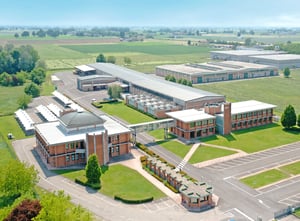
About Us
LEADER IN AC MOTOR INVERTER SOLUTIONS FOR INDUSTRIAL OEMs.
Since its inception in 1975, Zapi has been innovating and growing its core motion control business. In addition, Zapi
has built the ZAPI GROUP of companies to broaden its electrification and technology offerings.
Today, Zapi continues to grow its dominant global share and range of electrification products for OEMs of industrial vehicles, machines, and equipment.
- 01 - HISTORY
- 02 - MISSION
- 03 - CAPABILITIES
- 04 - CUSTOMERS
Zapi was founded over 50 years ago by the owner and President, Mr. Giannino Zanichelli. His initial vision was to transform the Lift Truck industry from internal combustion to safer and cleaner, battery electric motion control solutions. Zapi has realized this vision and has grown to be a leader and benchmark in the design and supply of high-performance traction inverters for Industrial OEMs (Original Equipment Manufacturers).
Zapi isn’t just a component supplier. Its purpose is to be the best OEM partner for battery electric traction system designs. This means working with customers to help optimize their products with Zapi expertise in motion control, steering, pump control, and lifting.
Zapi engineering expertise encompasses advanced motor control algorithms, power electronics design, and functional safety compliance for mission-critical applications.
This translates into a comprehensive range of AC series inverters, dual inverters, high-voltage inverters, electric power steering systems, and displays.
Zapi delivers motion control solutions to OEMs across various industries, including material handling, construction equipment, agricultural machinery, and diverse e-mobility applications. As the market leader in high-performance AC applications, Zapi serves manufacturers requiring reliable, high-performance controllers for battery-powered electric vehicles.
The company's global presence includes manufacturing and distribution facilities strategically positioned to provide localized support and rapid response to customer requirements across key industrial markets
